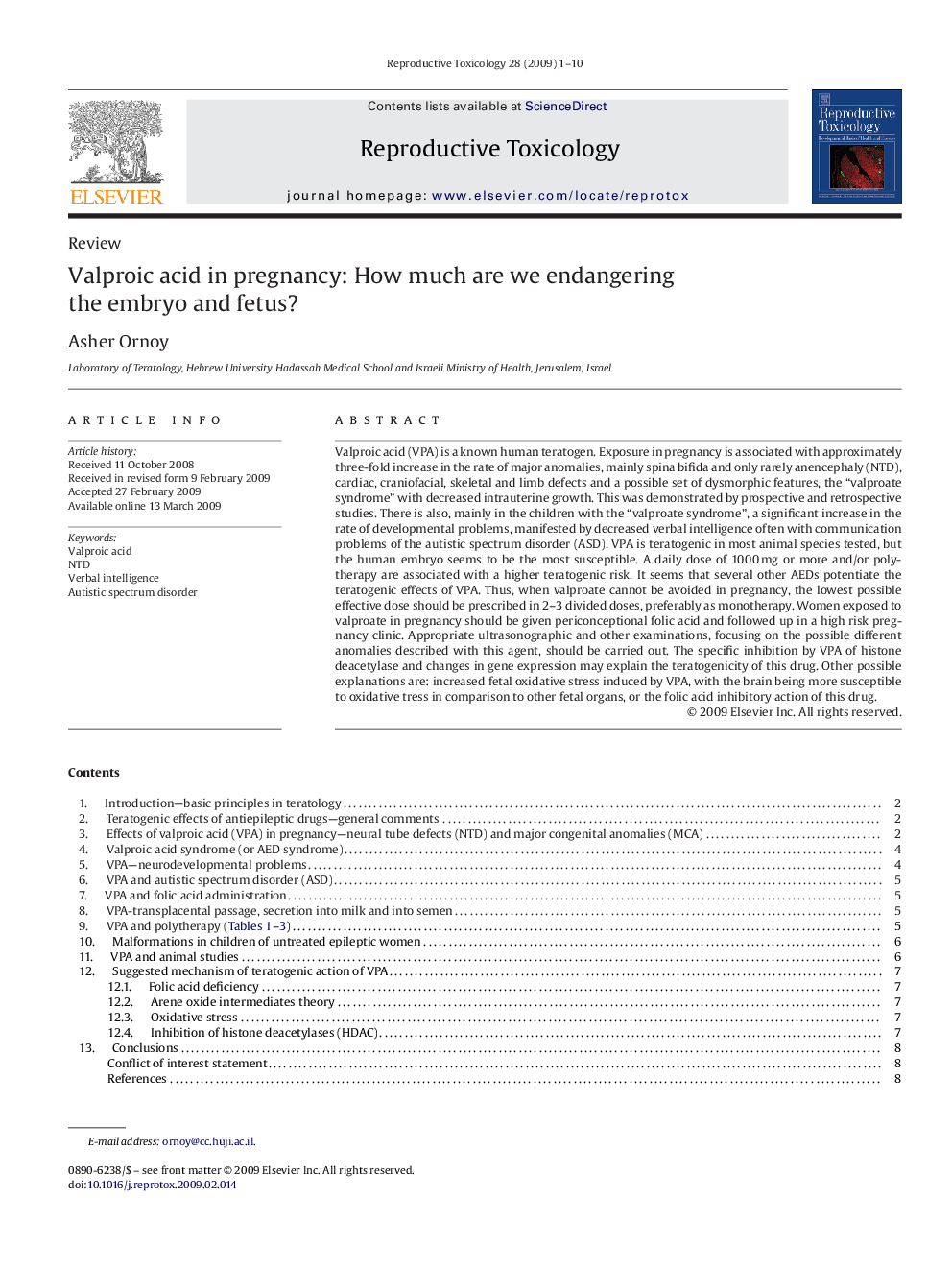| کد مقاله | کد نشریه | سال انتشار | مقاله انگلیسی | نسخه تمام متن |
|---|---|---|---|---|
| 2594548 | 1132272 | 2009 | 10 صفحه PDF | دانلود رایگان |

Valproic acid (VPA) is a known human teratogen. Exposure in pregnancy is associated with approximately three-fold increase in the rate of major anomalies, mainly spina bifida and only rarely anencephaly (NTD), cardiac, craniofacial, skeletal and limb defects and a possible set of dysmorphic features, the “valproate syndrome” with decreased intrauterine growth. This was demonstrated by prospective and retrospective studies. There is also, mainly in the children with the “valproate syndrome”, a significant increase in the rate of developmental problems, manifested by decreased verbal intelligence often with communication problems of the autistic spectrum disorder (ASD). VPA is teratogenic in most animal species tested, but the human embryo seems to be the most susceptible. A daily dose of 1000 mg or more and/or polytherapy are associated with a higher teratogenic risk. It seems that several other AEDs potentiate the teratogenic effects of VPA. Thus, when valproate cannot be avoided in pregnancy, the lowest possible effective dose should be prescribed in 2–3 divided doses, preferably as monotherapy. Women exposed to valproate in pregnancy should be given periconceptional folic acid and followed up in a high risk pregnancy clinic. Appropriate ultrasonographic and other examinations, focusing on the possible different anomalies described with this agent, should be carried out. The specific inhibition by VPA of histone deacetylase and changes in gene expression may explain the teratogenicity of this drug. Other possible explanations are: increased fetal oxidative stress induced by VPA, with the brain being more susceptible to oxidative tress in comparison to other fetal organs, or the folic acid inhibitory action of this drug.
Journal: Reproductive Toxicology - Volume 28, Issue 1, July 2009, Pages 1–10